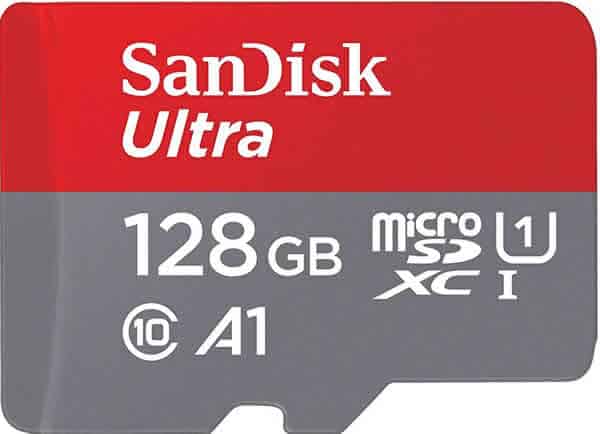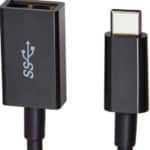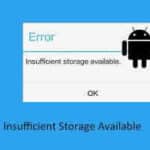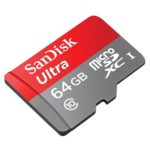Add more Storage to Android phones or tablets

If you’re running out of storage on your Android phone or tablet, don’t worry! There are a few simple ways you can expand Android storage to add more space. In this guide, we’ll show you how to use a microSD card, a cloud storage service, or an OTG device to expand Android storage capacity.
Increase Android Storage Space using microSD cards
It is not possible to increase the phone internal memory to boost Android phone storage. However, you can add microSD cards to increase storage space on Android devices. They’re relatively inexpensive and easy to use. To use a microSD card, simply insert it into the microSD card slot on your device. Once it’s inserted, your device will automatically recognize the card and start using it for storage.
If you already have a microSD card, you can replace it with a larger capacity card. Hardware wise, this is the only way to add storage to the actual Android device its self. For information about What size external storage will your Android device use?
To format your microSD card for use on your Android device, go to Settings > Storage > Format microSD card. This will erase all of the data on the card, so make sure to back up any important files before you do this.
Once your microSD card is formatted, you can start using file manager to store files such as photos, videos, music, and documents. You can also move apps to the microSD card to free up space on your internal storage.
microSD cards are also useful for transferring data from one device to another. Use your file manager to copy files to the SD card, the remove the card and insert it into the alternate device you want to transfer data to.
Comparison chart of microSD cards for Android:
| MicroSD Card | Capacity | Speed | Price | Pros | Cons |
|---|---|---|---|---|---|
| Samsung Evo Select | 32GB, 64GB, 128GB, 256GB, 512GB, 1TB | Up to 100MB/s read, up to 90MB/s write | Starting at \$10 | Fast read and write speeds, durable, affordable | Can be slow for some apps and games |
| SanDisk Extreme | 32GB, 64GB, 128GB, 256GB, 512GB | Up to 160MB/s read, up to 90MB/s write | Starting at \$15 | Very fast read and write speeds, durable | Can be expensive |
| Lexar Professional 1066x | 32GB, 64GB, 128GB, 256GB, 512GB, 1TB | Up to 160MB/s read, up to 90MB/s write | Starting at \$18 | Very fast read and write speeds, durable | Can be expensive |
| Kingston Canvas Go! Plus | 32GB, 64GB, 128GB, 256GB, 512GB | Up to 130MB/s read, up to 100MB/s write | Starting at \$12 | Affordable, fast read and write speeds | Not as durable as some other options |
| PNY Elite X microSDXC | 32GB, 64GB, 128GB, 256GB, 512GB, 1TB | Up to 100MB/s read, up to 90MB/s write | Starting at \$10 | Affordable, durable | Can be slow for some apps and games |
When choosing a microSD card for your Android device, it is important to consider the following factors:
- Capacity: How much storage space on your Android phone or tablet do you need? If you plan on storing a lot of photos, videos, or music, you will need a card with a higher capacity.
- Speed: How fast do you need the card to be? If you plan on running apps and games from the card, you will need a card with faster read and write speeds.
- Price: How much are you willing to spend? MicroSD cards range in price from around \$10 to \$100 or more.
Increase Storage Space on Android with Google Drive
Other options for increased storage is to use a cloud storage service such as Google Drive. How to use Google Drive on Android? These on-line services charge an fee based on how much storage you need. Google Drive provides free 15Gb for each Gmail account. One advantage of using cloud storage is that you can access this storage to retrieve files from any device including a phone, tablet, PC, laptop, etc.
Log into Google Drive with the Gmail account on your Android phone or tablet.
If you have a lot of music or photo files taking up a lot of space in your tablet, you can use on-line services such as Google Music or Google Photos to upload these files. How to backup photos and videos?
Once your files are uploaded to the cloud, you can access them from anywhere by opening the cloud storage app on your Android device or by logging in to the cloud storage website on your computer.
Expand Android Storage using OTG USB Flash devices
OTG devices allow you to connect external storage devices such as USB flash drives and portable hard drives to your Android device. To use an OTG device, you’ll need a USB-C to USB-A adapter.
Some of the new Android phones and tablets have a charge port that can be also used as a USB Hosted port which will allow you to add additional USB flash drives to your phone or tablet. Many of the Samsung Android devices, for instance, have this ability. How to use a USB flash drive on Android?
Once you have the adapter, simply connect the OTG device to your Android device using the adapter. Once it’s connected, your device will automatically recognize the OTG device and start using it for storage.
You can use an OTG device to store files such as photos, videos, music, and documents. You can also move apps to the OTG device to free up space on your internal storage.
Free up space by moving data and apps to external storage
There are some options for configuring the microSD card. For instance, you can move apps from internal storage to USB storage or to the SD card. You can accomplish this by going to Settings, General, Application Manager, then touch an app you want to move. When the App Info opens, if the app can be moved, a button labeled Move to SD Card, or Move to USB Card will be highlighted. Tap the button and the app will be moved from internal storage.
Which method is right for you?
The best way to expand storage on your Android device will depend on your individual needs and budget.
If you’re looking for a budget-friendly option, a microSD card is a good choice. microSD cards are relatively inexpensive and easy to use.
If you need more storage space, or if you want to be able to access your files from anywhere, a cloud storage service is a good option. Cloud storage services offer a variety of pricing plans, so you can choose one that fits your needs and budget.
If you need to transfer files between your Android device and other devices, an OTG device is a good option. OTG devices are relatively inexpensive and easy to use.
Conclusion
There are a few different ways to expand storage on your Android device. The best method for you will depend on your individual needs and budget.
How to add more storage to Android phones or tablets? Android phones and tablets are fixed hardware devices that have very limited upgrade capabilities. Storage is the only option to upgrade, however, you cannot increase the internal storage that was delivered in the original phone or tablet. A good option is to free up some of the storage space you have. How to free up storage space on Android?
Common problems and solutions to expand Android storage:
Problem: microSD card is not recognized by the device.
Solution: Try the following:
- Restart your device.
- Insert the microSD card into a different device to see if it is recognized.
- Format the microSD card.
- Try using a different microSD card.
Problem: microSD card is not showing up in storage options.
Solution: Try the following:
- Go to Settings > Storage and make sure that the microSD card is mounted.
- Go to Settings > Apps & notifications > Advanced > Special app access > Storage access and make sure that the microSD card is enabled for all apps.
- Try moving a file to the microSD card to see if it shows up in storage options.
Problem: microSD card is corrupted.
Solution: Try the following:
- Connect the microSD card to a computer and try to scan for errors.
- Format the microSD card.
- Try using a different microSD card.
Problem: Cloud storage service is not syncing properly.
Solution: Try the following:
- Make sure that you are connected to the internet.
- Try restarting your device.
- Check the cloud storage service’s website to see if there is a service outage.
- Try logging out of the cloud storage app and then logging back in.
- Try uninstalling and then reinstalling the cloud storage app.
Problem: OTG device is not recognized by the device.
Solution: Try the following:
- Restart your device.
- Connect the OTG device to a different device to see if it is recognized.
- Make sure that you are using a compatible OTG device.
- Try cleaning the OTG device connector.
Frequently asked questions and answers to expand Android storage:
Q: What is expandable storage?
A: Expandable storage is a type of storage that can be increased beyond the device’s internal storage capacity. This is typically done by inserting a microSD card or connecting an OTG device.
Q: What are the different ways to expand storage on an Android device?
A: There are three main ways to expand storage on an Android device:
- microSD cards: microSD cards are the most common way to expand storage on Android devices. They are relatively inexpensive and easy to use.
- Cloud storage services: Cloud storage services such as Google Drive, Dropbox, and OneDrive allow you to store your files online, so you can access them from anywhere.
- OTG devices: OTG devices allow you to connect external storage devices such as USB flash drives and portable hard drives to your Android device.
Q: Which method of expandable storage is the best?
A: The best method of expandable storage for you will depend on your individual needs and budget.
If you are looking for a budget-friendly option, a microSD card is a good choice. microSD cards are relatively inexpensive and easy to use.
If you need more storage space, or if you want to be able to access your files from anywhere, a cloud storage service is a good option. Cloud storage services offer a variety of pricing plans, so you can choose one that fits your needs and budget.
If you need to transfer files between your Android device and other devices, an OTG device is a good option. OTG devices are relatively inexpensive and easy to use.
Q: How do I use a microSD card to expand storage on my Android device?
A: To use a microSD card to expand storage on your Android device, simply insert the card into the microSD card slot on your device. Once it’s inserted, your device will automatically recognize the card and start using it for storage.
To format your microSD card for use on your Android device, go to Settings > Storage > Format microSD card. This will erase all of the data on the card, so make sure to back up any important files before you do this.
Once your microSD card is formatted, you can start using it to store files such as photos, videos, music, and documents. You can also move apps to the microSD card to free up space on your internal storage.
Q: How do I use a cloud storage service to expand storage on my Android device?
A: To use a cloud storage service to expand storage on your Android device, simply create an account and download the app to your Android device. Once you’ve logged in, you can start uploading your files to the cloud.
Once your files are uploaded to the cloud, you can access them from anywhere by opening the cloud storage app on your Android device or by logging in to the cloud storage website on your computer.
Q: How do I use an OTG device to expand storage on my Android device?
A: To use an OTG device to expand storage on your Android device, you’ll need a USB-C to USB-A adapter.
Once you have the adapter, simply connect the OTG device to your Android device using the adapter. Once it’s connected, your device will automatically recognize the OTG device and start using it for storage.
You can use an OTG device to store files such as photos, videos, music, and documents. You can also move apps to the OTG device to free up space on your internal storage.
Additional helpful information:
If you are getting an “Insufficient Storage Error”, adding more storage may resolve that issue. How to fix Insufficient Storage Error?
Which SD memory card should you use? Or, How to use a SD memory card.





